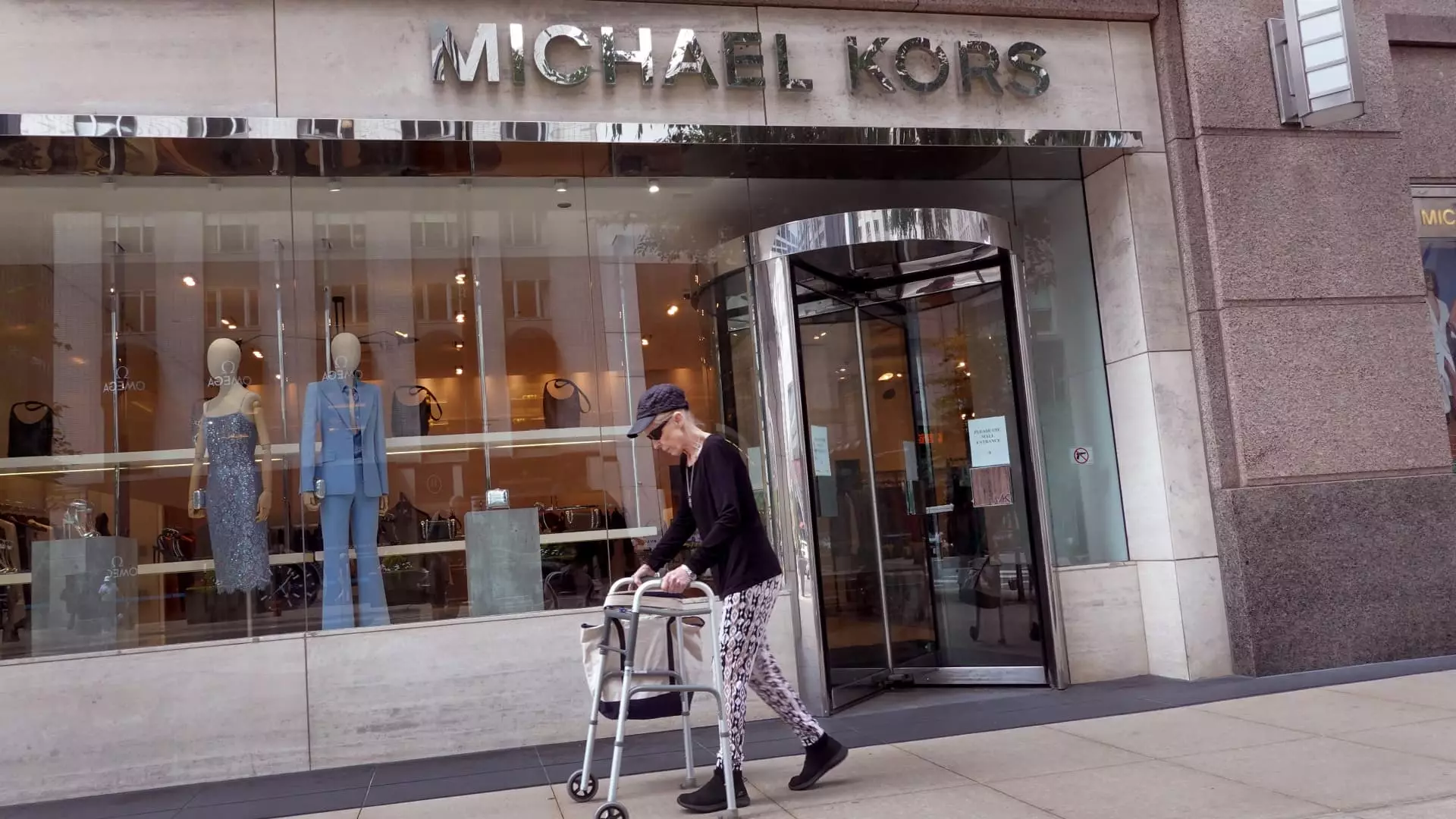In a notable shift in the luxury goods landscape, the proposed merger between Capri Holdings and Tapestry Inc. has been officially terminated following legal challenges posed by the Federal Trade Commission (FTC). Originally valued at a staggering $8.5 billion, this merger aimed to consolidate two of America’s largest luxury houses and create a robust portfolio of renowned brands. The decision to abandon this deal underscores the increasing scrutiny of corporate consolidation in the luxury sector and raises important questions about the future of both companies and the industry as a whole.
The FTC’s intervention in this merger illustrates a broader trend in regulatory practices regarding large corporate consolidations. Not only did the FTC file a lawsuit to block the merger, but a federal judge also supported this move, citing concerns that such a union would harm consumer interests and diminish employee benefits. This legal battle drew attention to the delicate balance between corporate growth and maintaining competitive markets. With the merger deadline looming in February, both companies recognized the futility of persisting in their efforts to obtain regulatory approval, leading to a mutual decision to terminate the agreement.
Capri’s CEO, John Idol, released a statement emphasizing the company’s commitment to its iconic brands, which include Versace, Jimmy Choo, and Michael Kors. Idol expressed confidence in Capri’s long-term growth potential despite the setback of the merger collapse. This optimistic outlook suggests that Capri will likely pivot its strategy towards strengthening its brand identities and enhancing consumer engagement without the resources from the Tapestry merger. On the other hand, Tapestry’s leadership appears to view the end of the merger as an opportunity to accelerate its own growth initiatives. CEO Joanne Crevoiserat articulated a desire to shift focus towards organic growth rather than relying on corporate mergers, suggesting that Tapestry had always equipped itself with diverse pathways to achieve success.
The end of this merger is not without financial implications. In light of the failed agreement, Tapestry has committed to a $2 billion share repurchase program, indicating a strategic move to bolster shareholder value and regain investor confidence. While there are no penalties associated with breaking the merger deal, Tapestry will reimburse Capri approximately $45 million for its expenses incurred during the merger negotiations. Such financial maneuvers underscore the significance of strategic financial planning in the wake of corporate setbacks, especially in a highly competitive market.
Market reactions to the news about the merger’s collapse were immediate and telling. Capri Holdings experienced a sharp decline in stock value, plummeting by around 50% following the unfavorable ruling from the judge, illustrating investor concerns regarding the company’s stability and growth prospects. Conversely, Tapestry saw its shares rise approximately 10%, reflecting a market perception that Tapestry’s independent trajectory may better serve its interests than a merger with Capri. Such contrasting stock performances highlight the intricate dynamics at play in the luxury sector, where confidence in leadership and future growth strategies can significantly alter investor sentiment.
With the merger now off the table, both companies are tasked with reevaluating their market positions and strategizing for sustainable growth. Capri’s immediate focus will likely be on revitalizing its most troubled brand, Michael Kors, which has been struggling with declining sales in recent months. Idol’s announcement of new strategic initiatives aimed at enhancing brand desirability indicates a proactive approach in reclaiming market share. Meanwhile, Tapestry’s commitment to invest in organic growth signifies its intention to innovate and adapt in an ever-evolving luxury marketplace.
The collapse of the Capri and Tapestry merger reflects not just regulatory challenges but also a shifting mindset within the luxury sector. As companies navigate the complexities of growth, brand management, and regulatory approval, the emphasis is increasingly on innovation, consumer engagement, and niche marketing. The luxury market is experiencing a pivotal transformation, and companies that can effectively realign their strategies in response to these changes are likely to emerge stronger in the long run. As both Capri and Tapestry chart their paths forward, their resilience and adaptability will be critical in setting the stage for a future defined by growth and consumer-centricity.

